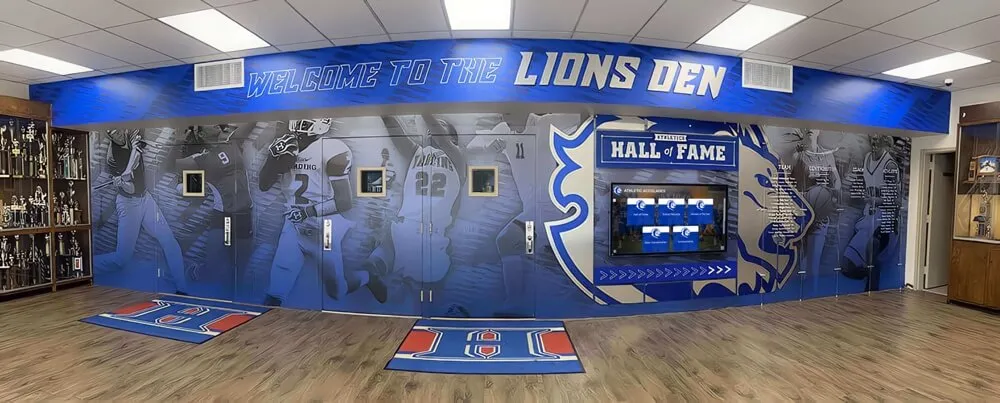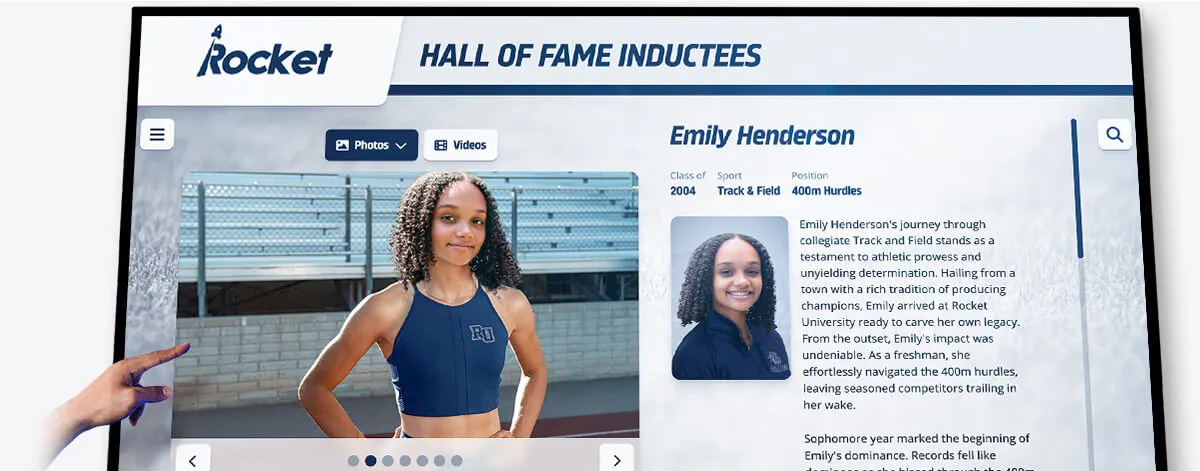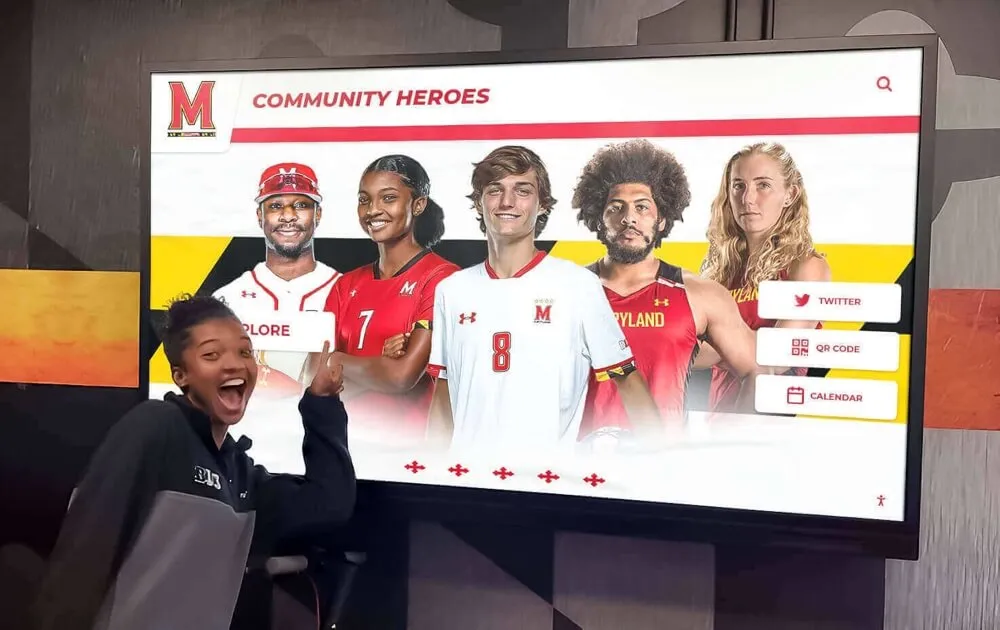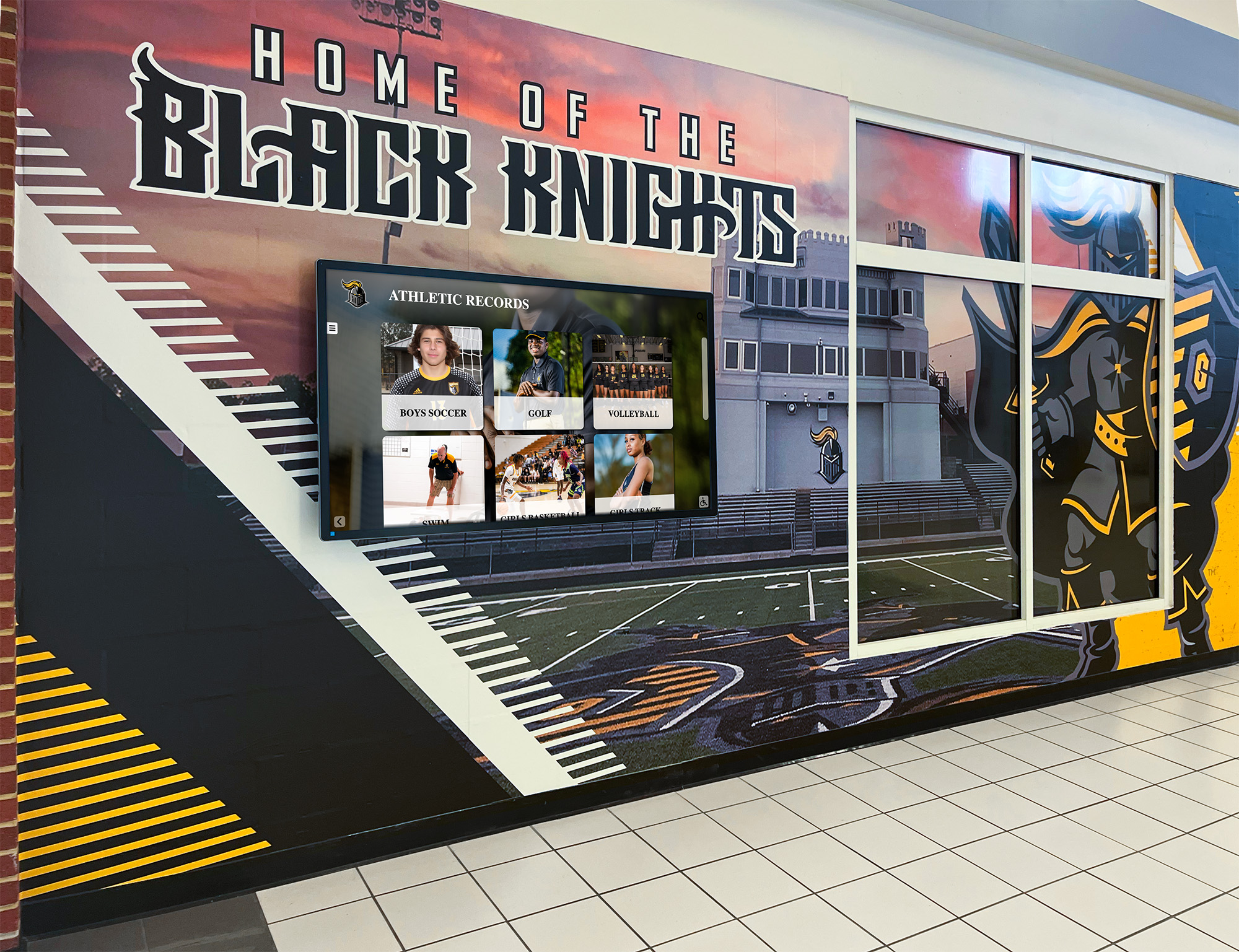Winter sports excellence demands recognition that endures beyond championship seasons. From legendary alpine skiers conquering Olympic downhill courses to figure skaters performing flawless programs under immense pressure, winter athletes represent dedication, skill development, and competitive excellence that shape lives and inspire communities. Yet many schools, clubs, and organizations struggle to create recognition systems that adequately honor winter sports achievements while preserving athletic heritage for future generations.
Whether you’re a coach planning recognition for your winter sports program, an athletic director seeking to honor program legends, or a booster club member working to celebrate team achievements, this guide provides actionable strategies for creating meaningful winter sports hall of fame experiences that serve your athletic community for generations.

Understanding Winter Sports Halls of Fame at Every Level
Winter sports recognition programs exist across the competitive spectrum, each serving distinct communities while sharing common purposes of honoring achievement and preserving athletic heritage.
National Winter Sports Halls of Fame
Several prestigious national institutions celebrate the highest levels of winter sports achievement, providing the ultimate recognition for athletes who have made exceptional contributions to their disciplines.
U.S. Ski & Snowboard Hall of Fame - Located in Ishpeming, Michigan, the birthplace of organized skiing in America, this museum has honored excellence in alpine skiing, cross-country skiing, ski jumping, freestyle skiing, and snowboarding since 1954. The Hall’s Honor Roll includes over 430 members reflecting the richness and diversity of American snowsports from early pioneer ski jumpers to today’s Olympic champions.
The 2025 induction class includes notable athletes such as Kikkan Randall, who won Team USA’s first Olympic gold in cross-country skiing with teammate Jessie Diggins in 2018, Lindsey Van, a pioneering ski jumper who won the sport’s first World Championship in 2009, and Todd Richards, a trailblazer on Team USA’s first 1998 Olympic halfpipe team who became snowboarding’s leading voice.
World Figure Skating Museum & Hall of Fame - This 10,000-square-foot facility in Colorado Springs, Colorado, showcases displays and artifacts from legendary skaters including Peggy Fleming, Dorothy Hamill, Michelle Kwan, and Scott Hamilton. The Hall of Fame has been divided into world and U.S. sections since 1992, recognizing both international excellence and American contributions to figure skating.
Colorado Snowsports Museum & Hall of Fame - Located in Vail with free admission, this museum tells the rich story of skiing and snowboarding in Colorado. The Hall of Fame has inducted more than 250 athletes, sport builders, and pioneers, with exhibits covering ski fashion, the rise of snowboarding, Colorado’s competition history, and the famed 10th Mountain Division.
These national institutions set standards for winter sports recognition while providing inspiration for programs at all levels seeking to honor athletic achievement.

College and University Winter Sports Recognition
College winter sports programs create institutional halls of fame honoring exceptional athletes, coaches, and teams who elevated their programs. Schools with strong winter sports traditions—particularly those in mountain regions or northern climates—emphasize recognition as part of program culture.
Universities like the University of Colorado, University of Vermont, Dartmouth College, and University of Denver maintain comprehensive recognition including displays in athletic facilities, online databases of program legends, and annual induction ceremonies during winter sports seasons.
College winter sports halls of fame serve multiple strategic purposes beyond honoring past achievement. They strengthen recruiting by demonstrating program tradition to prospective student-athletes, create engagement opportunities with alumni who feel valued through recognition, preserve institutional athletic history, and inspire current athletes by showcasing concrete examples of excellence.
High School and Youth Winter Sports Programs
High school winter sports programs in regions with appropriate climates honor exceptional athletes, coaches, and teams at the local level where winter sports passions often define community identity. State athletic associations in winter sports regions frequently maintain statewide halls of fame recognizing outstanding contributors.
Individual schools and clubs also create their own winter sports recognition celebrating program-specific excellence. These local systems might honor state champions, athletes who earned collegiate scholarships, exceptional coaches with championship traditions, or teams that achieved memorable seasons.
High school and youth winter sports recognition faces unique challenges compared to college or professional programs. Budget constraints limit investment, administrative time proves limited, physical space restricts traditional recognition capacity, and historical records from decades past may be incomplete. Despite these challenges, winter sports recognition delivers tremendous value by strengthening community fabric, motivating current athletes, and engaging alumni.
Essential Components of Effective Winter Sports Recognition
Successful winter sports hall of fame programs share common elements that ensure fairness, maintain credibility, and create meaningful experiences for honorees and visitors.
Clear Selection Criteria for Winter Sports Achievement
Establishing transparent selection standards prevents perceptions of favoritism while ensuring recognition maintains appropriate prestige. Most winter sports programs consider multiple achievement dimensions when evaluating candidates.
Athletic Achievement Standards for alpine skiing might include criteria like World Cup victories, Olympic or World Championship medals, national championship titles, statistical records in specific disciplines (downhill, slalom, giant slalom, super-G), and collegiate All-American honors.
For figure skating, recognition might emphasize national championship medals, World Championship or Olympic appearances, successful triple or quadruple jump execution, artistic innovation contributions, and professional skating career achievements.
Ice hockey criteria overlap with comprehensive hockey recognition programs, including championship team contributions, scoring and statistical milestones, all-conference or all-state selections, and advancement to collegiate or professional hockey.
Character and Citizenship Considerations ensure recognition extends to those who embodied positive values beyond athletic skill. Most programs require that candidates demonstrated sportsmanship and ethical conduct, positive leadership influence, academic achievement balancing athletic commitments, community service and civic engagement, and representation of institutional values.

Eligibility Requirements manage timing and qualification standards. Common requirements include minimum time periods since graduation or competition (typically 3-10 years), connection to specific institutions or geographic regions, availability of adequate documentation verifying achievements, and willingness to participate in recognition events when possible.
Selection Committee Composition determines who makes final recognition decisions. Effective committees typically include diverse representation from athletic administrators, former athletes and coaches, community representatives, and winter sports historians or media members familiar with program heritage.
Comprehensive Induction Ceremonies
The recognition experience matters as much as the recognition itself. Well-planned induction ceremonies create memorable experiences for honorees, families, and winter sports communities while generating excitement around hall of fame programs.
Successful ceremonies typically include formal presentations during high-visibility events, speeches from inductees sharing personal reflections, video tributes showcasing highlights and career moments, presentation of commemorative items like plaques or medals, and recognition of family members and coaches who supported athletic journeys.
Beyond the ceremony itself, many programs create supporting activities including recognition dinners or receptions, autograph sessions allowing fans to meet legends, panel discussions where inductees share insights about winter sports, and photo opportunities with championship trophies or Olympic memorabilia.
These ceremonial experiences strengthen emotional connections between honorees and institutions while creating shareable moments that extend recognition visibility through media coverage and social sharing.
Physical or Digital Displays Creating Lasting Visibility
Recognition ceremonies create memorable moments, but permanent displays ensure achievements remain visible year-round to current athletes, visitors, and community members.
Traditional Physical Displays have served winter sports programs for generations. Common formats include wall-mounted plaques listing inductees, trophy cases showcasing individual awards and team championships, retired bib numbers or jerseys for exceptional contributors, and photo galleries featuring action shots from competitions.
Physical displays provide tangible recognition requiring no technology, create impressive visual statements, and convey permanence through substantial materials. However, traditional approaches face significant limitations including space constraints, expensive updates and additions, static formats providing minimal information, and accessibility limitations to single physical locations.

Modern Digital Recognition Systems overcome many traditional limitations while creating enhanced engagement opportunities. Digital hall of fame displays utilize commercial-grade touchscreen technology to create interactive experiences where visitors actively explore athlete profiles, championship teams, coaching histories, and program milestones.
These systems provide unlimited capacity accommodating thousands of honorees without space constraints, instant updates through cloud-based platforms, rich multimedia content including photos, videos, and detailed narratives, searchable databases allowing quick discovery, and engagement analytics revealing how visitors interact with content.
Solutions like Rocket Alumni Solutions provide purpose-built platforms specifically designed for athletic recognition, addressing unique needs of winter sports programs through features including statistical integration, team roster displays, championship season documentation, and sport-specific categorization.
Creating Recognition for Alpine Sports Programs
Alpine skiing, snowboarding, and related mountain sports share recognition needs that differ from traditional team sports, requiring specialized approaches that accommodate diverse disciplines and competitive formats.
Recognizing Diverse Disciplines
Alpine sports encompass numerous disciplines, each requiring specialized skills and deserving appropriate recognition. Effective programs celebrate excellence across all disciplines rather than favoring particular events.
Alpine Skiing Disciplines:
- Downhill racing emphasizing speed and courage
- Slalom requiring technical precision and quick turns
- Giant slalom combining speed with technical elements
- Super-G blending downhill speed with technical aspects
- Alpine combined integrating multiple disciplines
Freestyle and Freeride:
- Moguls skiing navigating bumpy terrain
- Aerial skiing performing acrobatic maneuvers
- Halfpipe competitions in both skiing and snowboarding
- Slopestyle courses featuring rails, jumps, and technical features
- Big mountain freeride skiing on extreme terrain
Snowboarding Disciplines:
- Halfpipe competitions
- Slopestyle events
- Snowboard cross racing
- Parallel giant slalom technical events
- Big air jumping competitions
Recognition systems should accommodate all disciplines rather than creating hierarchies favoring particular events. Digital record boards for track and field demonstrate how multi-discipline sports can be comprehensively recognized through organized categorization.

Seasonal and Age-Based Competition Recognition
Winter sports competitions organize by age divisions and seasons, requiring recognition systems that accommodate these structures. Youth programs might recognize achievements in categories like U10, U12, U14, U16, and U18/U21 divisions, while adult masters competitions provide opportunities for athletes to compete beyond traditional peak years.
Seasonal championships at local, regional, and national levels deserve appropriate recognition. State championship titles, regional qualifying performances, national championship appearances, and international competition participation all represent significant achievements worthy of celebration.
Weather and Geographic Challenges
Winter sports programs face unique logistical challenges related to weather dependence, geographic concentration in mountainous or northern regions, and seasonal facility access limitations. Recognition programs serve important functions preserving heritage during off-seasons and connecting geographically dispersed athletes who may have moved away from winter sports regions.
Digital recognition platforms provide particular value for winter sports programs by enabling year-round accessibility regardless of season, remote access for alumni living in non-winter climates, comprehensive historical preservation spanning decades, and engagement opportunities during summer months when physical facilities may be closed or repurposed.
Ice Sports Recognition: Figure Skating and Speed Skating
Ice sports including figure skating, speed skating, and ice hockey share arena environments but require discipline-specific recognition approaches acknowledging their unique competitive characteristics.
Figure Skating Achievement Recognition
Figure skating combines athletic and artistic elements, requiring recognition that honors both technical skill and artistic interpretation. Achievement categories might include national championship medals at various levels, World Championship or Olympic appearances, successful execution of difficult jump elements (triple jumps, quadruple jumps), artistic innovation or choreographic contributions, and professional skating career achievements.
Figure skating programs often maintain detailed performance histories including free skate scores, short program achievements, and competition placement records. Recognition systems can showcase performance videos demonstrating athletic and artistic excellence, creating emotional connections impossible with text-based displays alone.

Speed Skating Excellence
Speed skating emphasizes pure athletic performance measured through precise timing. Recognition categories include event-specific records (500m, 1000m, 1500m, 3000m, 5000m, 10000m), national championship titles, World Cup victories, Olympic or World Championship medals, and age-group records demonstrating sustained excellence.
Speed skating’s precise measurement systems create ideal opportunities for statistical recognition. Digital displays can show record progressions across program history, comparing performances across different eras while accounting for equipment and technique evolutions.
Ice Hockey Recognition
Ice hockey represents winter sports’ most popular team sport in many regions, particularly in northern states and Canada. Comprehensive hockey recognition programs honor the sport’s rich tradition, from youth programs through Olympic competition.
High school hockey programs in states like Minnesota, Massachusetts, Michigan, and Wisconsin maintain passionate fan bases and strong traditions deserving comprehensive recognition. Student athlete recognition programs provide frameworks applicable to hockey alongside other winter sports.
Cross-Country Skiing and Nordic Sports Recognition
Nordic sports including cross-country skiing, ski jumping, and Nordic combined represent winter sports traditions emphasizing endurance, technique, and mental toughness.
Cross-Country Skiing Achievement
Cross-country skiing encompasses diverse race formats requiring different physiological and technical capabilities. Recognition should acknowledge achievements across sprint races (1.5km or shorter), middle-distance races (5km-15km), long-distance races (30km-50km), relay team competitions, and pursuit format races.
The 2025 U.S. Ski & Snowboard Hall of Fame induction of Kikkan Randall, who won America’s first Olympic gold in cross-country skiing, demonstrates the sport’s growing recognition. Programs celebrating cross-country excellence benefit from documenting complete competitive histories showing progression from youth through elite levels.
Ski Jumping and Nordic Combined
Ski jumping combines technical precision with courage, as athletes launch themselves from heights exceeding 100 meters. Recognition might honor achievements including distance records on specific hills, style points reflecting technical execution, team competition contributions, and World Cup or championship performances.
Nordic combined integrates ski jumping with cross-country skiing, creating unique demands requiring versatility. Athletes excelling in combined events deserve recognition highlighting their multi-discipline capabilities.

Modern Technology Transforming Winter Sports Recognition
Digital innovation has revolutionized possibilities for honoring winter sports achievement while addressing fundamental limitations of traditional physical displays.
Cloud-Based Content Management
The software platform fundamentally determines usability and long-term success of digital recognition systems. Purpose-built recognition content management systems provide essential capabilities including intuitive interfaces requiring no technical expertise, responsive design adapting to all screen sizes, powerful search and filtering for content discovery, multimedia support for photos and videos, cloud-based architecture enabling remote updates, and analytics tracking engagement patterns.
Cloud-based systems eliminate technical infrastructure requirements at institutions. No servers to maintain, no software to install, and no IT expertise required for operation. Content managers simply log into web-based administration interfaces to add profiles, upload media, and manage all recognition aspects.
Multimedia Storytelling for Winter Sports
Winter sports provide exceptional opportunities for visual storytelling through action photography and video. Digital recognition systems can integrate action photos capturing athletic moments at peak performance, video highlights of championship runs or performances, athlete interviews discussing training and competition experiences, behind-the-scenes footage showing preparation and technique, and historical context explaining achievement significance.
When visitors watch video of a championship slalom run while reading the athlete’s description of preparation and strategy, they experience the achievement rather than simply reading about it. These emotional connections prove particularly powerful for current athletes seeking inspiration.
Mobile and Web Access Extending Reach
While physical touchscreen displays create impressive facility experiences, extending recognition online multiplies impact and engagement. Web-based companion platforms enable alumni anywhere worldwide to explore hall of fame content, prospective students to research program traditions remotely, families to share athlete profiles through social media, and media outlets to research historical information.
This digital accessibility transforms recognition from location-dependent displays into always-available online resources serving diverse audiences. Alumni living distant from winter sports regions can regularly engage with program heritage, maintaining emotional connections that strengthen support and engagement.

Best Practices from Successful Winter Sports Programs
Learning from established recognition programs helps institutions implement effective systems while avoiding common pitfalls.
Starting with Clear Vision and Sustainable Scope
The most common mistake in winter sports hall of fame development involves attempting overly ambitious initial implementation that exceeds available resources. Successful programs begin with clear, realistic vision matching institutional capacity.
Effective planning addresses fundamental questions including what achievement levels warrant recognition, what time periods will receive initial focus, what content depth proves appropriate, what resources are available for development and maintenance, and what timeline allows quality implementation.
Many successful programs adopt phased approaches—launching with recognition of recent and legendary figures, establishing quality standards, then systematically expanding to additional eras and contributors.
Maintaining Consistent Selection Standards
Hall of fame credibility depends on consistent application of selection criteria across all candidates regardless of era, popularity, or external pressure. Once programs establish achievement standards, maintaining them preserves recognition meaning and value.
Pressure to make exceptions inevitably arises—beloved community figures who don’t quite meet standards, influential donors whose competitive careers proved modest, or contemporary athletes whose achievements seem impressive until evaluated against historical criteria. Strong selection committees guided by documented standards resist these pressures while explaining decisions transparently.
Creating Ceremonial Experiences That Honor Inductees
The induction ceremony represents the apex of recognition experience. Well-planned ceremonies create memorable moments for honorees, families, and winter sports communities while generating excitement that strengthens program visibility.
Successful ceremonies balance formality appropriate to honor significance with warmth that creates genuine emotional connection. Elements typically include dignified recognition with biographical highlights, emotional video tributes showcasing career highlights, speeches from inductees sharing reflections, testimonials from coaches or teammates, presentation of commemorative items, and photo opportunities.

Ensuring Ongoing Maintenance and Updates
Recognition programs lose impact when they become static or outdated. Successful programs establish sustainable rhythms for regular additions through annual or biennial induction classes, periodic content enhancements to existing profiles, technology updates maintaining contemporary experiences, and promotional campaigns keeping recognition visible.
Annual induction ceremonies create natural cycles for recognition additions while generating recurring publicity and engagement opportunities. Regular scheduling helps selection committees establish workflows and enables supporters to plan attendance.
Addressing Climate Change and Winter Sports Participation
Winter sports face unique challenges related to climate change impacts on snow reliability, shorter seasons affecting training and competition, facility viability in warming regions, and shifting participation patterns.
Recognition programs serve important functions documenting winter sports history as environmental conditions evolve, preserving memories of competitions on courses or venues that may become obsolete, celebrating athletes who competed during different climate eras, and inspiring continued participation despite environmental challenges.
Digital recognition proves particularly valuable for preserving winter sports heritage as climate change potentially transforms competition landscapes. Comprehensive documentation through photos, videos, and athlete narratives creates permanent records of winter sports traditions that future generations can explore regardless of evolving environmental conditions.
Conclusion: Honoring Winter Sports Excellence for Generations
Winter sports achievement deserves recognition matching its significance. From Olympic alpine skiers and figure skaters to high school athletes who dedicated winters to their sports, winter sports excellence represents determination, skill development, competitive spirit, and personal growth that shape individuals and strengthen communities.
Effective winter sports hall of fame programs serve multiple essential purposes. They preserve athletic heritage ensuring extraordinary achievements remain visible to future generations, inspire current athletes by showcasing concrete examples of excellence, strengthen alumni connections by demonstrating that institutions value contributions, support recruiting by evidencing program tradition, and enhance community pride by celebrating achievement.

Whether implementing traditional physical displays, modern digital interactive recognition systems, or hybrid approaches combining both elements, successful winter sports halls of fame share common characteristics. They establish clear selection criteria applied consistently, create comprehensive content telling compelling stories, maintain accessibility through prominent placement and intuitive organization, provide regular updates keeping recognition current, and integrate recognition with broader athletic programming to maximize impact.
The evolution from space-constrained trophy cases to unlimited-capacity digital platforms has fundamentally transformed recognition possibilities. Institutions no longer face impossible choices about which achievements fit limited space. Digital solutions enable comprehensive recognition of entire program histories while creating engaging multimedia experiences that resonate with contemporary audiences.
For schools, clubs, and organizations seeking to honor winter sports excellence while inspiring future champions, modern recognition technology provides practical approaches that serve communities for generations. From celebrating athletic excellence across all sports to recognizing specific achievement milestones, comprehensive recognition systems deliver lasting value that justifies investment while strengthening programs and institutions.
Ready to explore options for your winter sports hall of fame program? Whether starting from scratch or enhancing existing recognition with modern capabilities, solutions like Rocket Alumni Solutions provide specialized support from planning through implementation and ongoing management. Discover how purpose-built recognition technology can transform your institution’s ability to celebrate winter sports excellence while inspiring future generations of athletes who will add their own chapters to your program’s legacy.




































